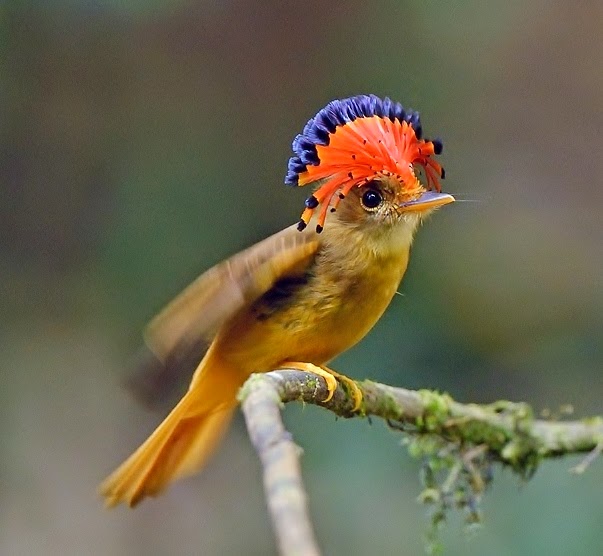 |
| Photo by Luiz Cacaio (Bird Forum) |
Common name:
Amazonian royal flycatcher (en); maria-leque (pt); moucherolle royal (fr); atrapamoscas real (es); kronentyrann (de)
Taxonomy:
Order Passeriformes
Family Tyrannidae
Range:
This species is found from southern Mexico south to northern Brazil and Bolivia, and also in south-eastern Brazil.
Size:
These birds are 15-17 cm long and weigh 14-21 g.
Habitat:
The Amazonian royal flycatcher is mostly found in swamp forests, also using moist tropical forests, mangroves and rivers. They occur from sea level up to an altitude of 1.400 m.
Diet:
They feed mainly on flying insects, such as butterflies, moth and bugs.
Breeding:
These birds breed in October-June. The nest is a large, elongated structure made of plant fibres, rootlets, leaves and moss, placed hanging from a tree branch or vine, 2-6 m above the ground. The female lays 2 brown eggs which are incubated for 22 days. The chicks fledge 21-22 days after hatching.
Conservation:
IUCN status – LC (Least Concern)
This species has an extremely large breeding range and the global population is estimated at 0,5-5 million individuals. The population is suspected to be stable in the absence of evidence for any declines or substantial threats.







